The Trust offers financial assistance to individuals or groups to carry through restoration or improvement projects to completion. The Trust also invites enquiries about sponsoring one or more Awards.
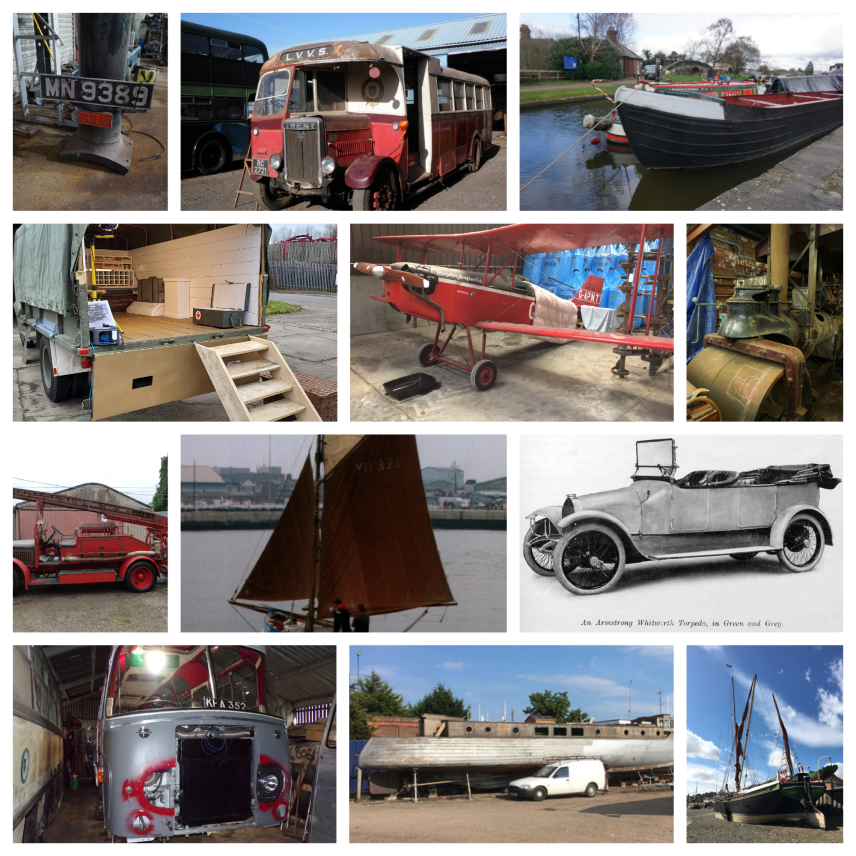
National Transport Trust Commemorative Awards
With the exception of the Sir William McAlpine Award, projects winning a National Transport Trust Commemorative Award are selected from those already awarded Restoration Awards each year, and as such, are recognised as the best of the best of each year's restoration projects receiving a commemorative certificate in addition to the Restoration Award itself.
The Sir William McAlpine Award
The Sir William McAlpine Award commemorates the great preservationist and transport heritage enthusiast and former National Transport Trust president. The winner is selected by Sir William's widow and current President of the National Transport Trust, Judy, Lady McAlpine.
This year The Sir William McAlpine Award is shared between two winners, who have been selected by Lady McAlpine, not so much for a single preservation project, but more for long term activity in transport heritage and preservation work.
Stephen Middleton & Family
Stephen is well known in railway preservation circles for his meticulous restorations of vintage carriages but not many know that he and his family have also restored an ex-McAlpine Hudswell Clark Engine No. 88, sister to Fawley Hill's No.31. Sir William would have been so thrilled to see the two engines together again, though not so happy to hear that No.88 is here to stand in for a sick No. 31! He would definitely have approved of HIS award going to a man who does such amazing work to preserve so much Heritage Rail stock, and to run a railway that makes use of it.
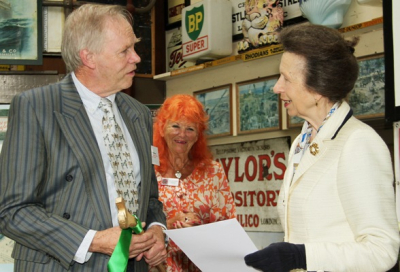
Ian Cryer
Ian is a brilliant artist, and past President of the Royal Institute of Painters in Oils, who just happens to paint a lot of railway scenes and to have written and illustrated a series of books about Rachael the Railway Horse, who of course pulled a Railway wagon very similar to the one Ian restored and to the Awards Ceremnoy, complete with horse! Sir William had enormous respect for Ian both as an artist, a preservationist and long-time railway volunteer.
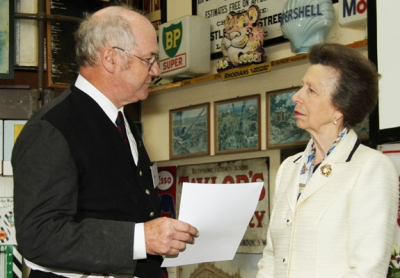
The Peter Allen Award
Sir Peter Allen was the particularly influential first president of the National Transport Trust. The award in his name is generally made for the restoration of a road steam vehicle and is this year awarded to Anthony Coulls of Shildon, County Durham, for the restoration of a 1926 Marshall Universal steam roller which aims to recommission and reassemble the steam roller which has been in store under cover since 1985. The roller is owned by an older gentleman and the ambition is to get it back in steam during 2023 so the owner can see his name on the roof sides and share this rare engine at rallies and events.
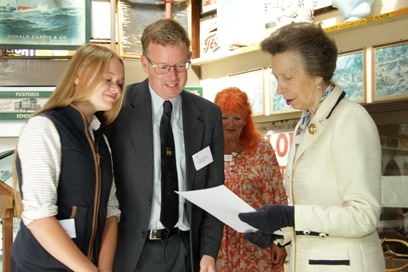 The Marshall Universal was the ultimate development of the steam roller. With a high speed enclosed twin cylinder engine unit, precision steering and adjustable back axle and wheels, it was designed to roll tarmac and be a serious contender to challenge the motor rollers. This particular steam roller was the very first of the Marshall Universals and was the prototype, initially being fitted with steam steering. There are only 6 remaining in existence now, and none are in operation in steam in the public domain. It also happens to be the first steam roller that the applicant drove, as an 8 year old!
The Marshall Universal was the ultimate development of the steam roller. With a high speed enclosed twin cylinder engine unit, precision steering and adjustable back axle and wheels, it was designed to roll tarmac and be a serious contender to challenge the motor rollers. This particular steam roller was the very first of the Marshall Universals and was the prototype, initially being fitted with steam steering. There are only 6 remaining in existence now, and none are in operation in steam in the public domain. It also happens to be the first steam roller that the applicant drove, as an 8 year old!
The engine is currently stored and has been partly dismantled for statutory boiler examinations. It has been re-registered for the road and all DVLA paperwork prepared in readiness for it being moved to County Durham for work and recommissioning. A new water tank has been made but has yet to be fitted.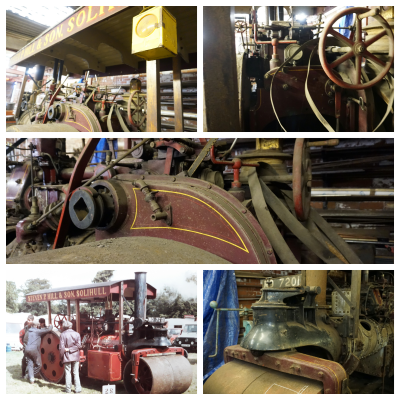 The Marshall Universal prototype is very unusual and has not been seen in public for 37 years. I believe it deserves an award so that people can see an example of the ultimate steam roller in terms of technical development, but also so the owner is able to see the engine in operation again in his lifetime. The involvement of keen young people in our local steam crew - both men and women under 30 and in their teens - is also important for skills transfer and retention. Of particular note here is the determination to ensure that Anthony's 17 year old daughter Charlie, who is studying an agricultural apprenticeship but has a burning love of things mechanical including tractors and steam engines, will be fully involved in the restoration and running of this fascinating engine.
The Marshall Universal prototype is very unusual and has not been seen in public for 37 years. I believe it deserves an award so that people can see an example of the ultimate steam roller in terms of technical development, but also so the owner is able to see the engine in operation again in his lifetime. The involvement of keen young people in our local steam crew - both men and women under 30 and in their teens - is also important for skills transfer and retention. Of particular note here is the determination to ensure that Anthony's 17 year old daughter Charlie, who is studying an agricultural apprenticeship but has a burning love of things mechanical including tractors and steam engines, will be fully involved in the restoration and running of this fascinating engine.
The Ron Wilsdon Award
The Ron Wilsdon Award is made in memory of one of the National Transport Trust's founders. His transport heritage interest was primarily cars and road vehicles, so this award generally goes to an award winning restoration of a road vehicle. This year, the Ron Wildon Award is made to Stephen Prior of Midhurst, West Sussex, for the restoration of a 1913 Armstrong Whitworth 17/25 touring car GU29 9JR.![]()
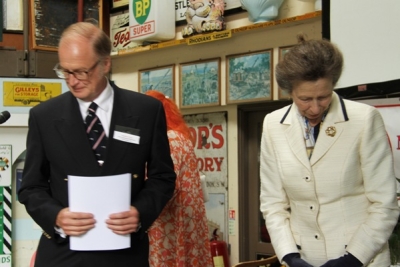
Armstrong and Whitworth are arguably two of the greatest names in British transport and engineering history famed for ships, aircraft and locomotives, and the two names run through the 20th century in so many different areas. As Armstrong Whitworth they only made cars between 1907-15, and even then in fairly small numbers but 15 different models. Research has only tracked down 9 other survivors worldwide, and none are 17/25s like this one. There are only two other Armstrong Whitworths in the UK, both in museums. Most Armstrong Whitworths were bodied in-house but this one was bodied by Angus Sanderson. In 1960 the new owner found people who remembered the car in its early years and made a large history file. This car is a unique survivor of a great marque in transport history.
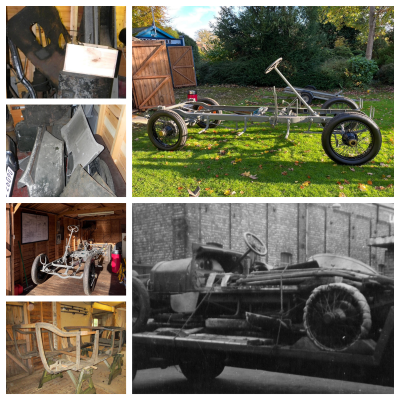
The project aim is the complete restoration of this unique vehicle. The car was partially stripped down in 1930 to make into a factory truck, but the conversion was never completed. It was salvaged from the factory for restoration in 1960. Over the next year, the new owner dismantled the car to its component parts at which point all work ceased. The car was purchased by the current owner in 2011, packed into tea chests and trunks. Fortunately it came with a set of drawings which have proved invaluable in trying to piece the car together.
The car is currently restored to a rolling chassis, and work is continuing on both the running gear and the bodywork, with most of the work being done by the owner himself. The gearbox is prsntly being professionally rebuilt.
This is a brave and determined restoration of a unique survivor of one of the great names of British transport history and the only example ever likely to be seen on the roads of the UK, and thoroughly deserves recognition by way of a Restoration Award.
Restoration Awards
The Western Desert Recce Group - Doctor Lawson's Long Range Desert Group 1942 Chevrolet Truck
This award goes to Western Desert Recce Group (WDRG) based in Blantyre, but soon to be moving to Paisley, for the restoration of a Long Range Desert Group Chevrolet truck, which is being kitted out exactly as was the case in the western desert by the LRDG medical officer, Doctor Richard Lawson. Gary Wallace of the WDRG is pictured below being presented with the award.
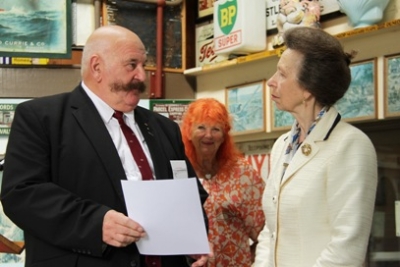
The Long Range Desert Group (LRDG) operated during the Second World War behind Italian/ German lines in the Egyptian desert. Observers may have seen them in the role of "taxis", in the recent fanciful BBC show SAS Rogue Heroes. They were much more than that. They were involved in significant intelligence operations and were responsible for creating logistical bases for other irregular operations, such as the SAS. The LRDG was operating well before Col. Stirling and his merry men started their adventures.
In 1941 the LRDG recruited Dr Richard Pike Lawson MB MC MiD of the RAMC as its Medical Officer. Dr Lawson seems to have been a man of significant resource. He realised that, for him to perform his task, he and his medical orderlies needed to accompany the active members on their operations. LRDG thus needed to possess a mobile consulting room/casualty station. This was created entirely by Dr Lawson and his orderlies, mainly through begging, borrowing and stealing suitable materials and building them into a 15cwt Chevrolet CMP truck (although not the vehicle used here, which itself is a very rare Indian Army model). The assembly was demountable and could be used in a tent.
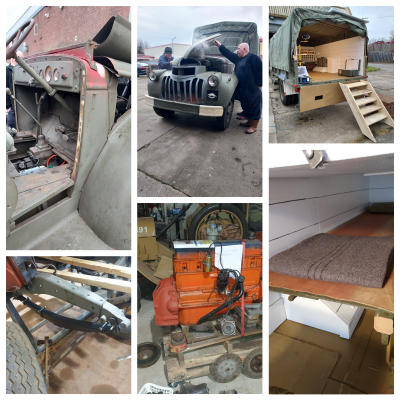
The WDRG is a Scottish charity run by veterans for veterans and was founded in 2010 by Maj Gary Wallace (retd). Maj Wallace's father served in the LRDG.
It has two interrelated functions
They visit events and shows to display the vehicles and role play their occupants. Maj Wallace has headed up the truck restoration, assisted by a group of volunteers. The primary creator of the medical outfit is Tam Wallace (no relation of Maj Wallace).
The restoration and equipping of this showpiece, based on the painstaking notes of Dr Lawson, now held by the Imperial War Museum, is a fitting tribute to a remarkable organisation, and it has provided hours of entertainment for its service veteran volunteers. As such, it is a very worthy recipient of a Restoration Award
Andrew Robson and Katherine Norris - 1941 Gentleman's Yacht Glala
Andrew Robson and Katherine Norris of Colchester in Essex have a challenge on their hands, in the form of the restoration of the 1914 Gentleman's Yacht Glala
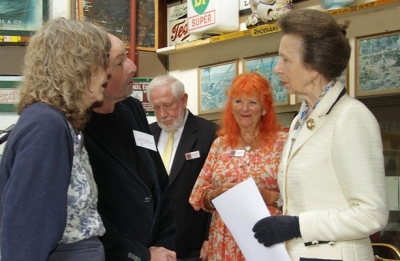
Glala, built in 1914/15, is a 78', teak Gentleman's yacht. Owned by many famous people prior to World War 2, she is one of the few surviving purpose-built twin-screw motor yachts of the cross-over period between steam and paraffin/petrol/diesel power and quite probably the oldest built in the UK. She is also a Dunkirk Little Ship and served throughout WW2 as a harbour patrol vessel, hospital ship and a fire fighting boat. A stalled project when purchased by the current owners in 2017, she has been on land since 2008. And she needs to get back in the water! In many ways she resembles the steam yachts of the era, in shape and layout but she never actually had steam power. Initially she was powered by a pair of Thornycroft paraffin engines, but Gardner diesels are destined to provide propulsion in the future.
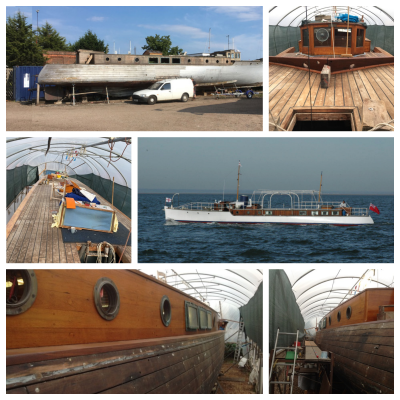 The decks had been re-laid, but the leaky stem had not, although it is completed now. Caulking and wood repairs, together with fitting and commissioning of engines and shafts, and the plethora of controls and systems needed for a vessel like this, represent the massive challenge mentioned at the start.
The decks had been re-laid, but the leaky stem had not, although it is completed now. Caulking and wood repairs, together with fitting and commissioning of engines and shafts, and the plethora of controls and systems needed for a vessel like this, represent the massive challenge mentioned at the start.
Glala is beautiful, historic and significant as a purpose-built twin-screw motor yacht. The owners have worked tirelessly, learning from other boat-owners and boat-builders and researching methods and materials so that build quality is not compromised. This determination and dedication is a tribute to the owners, and merits this well-earned restoration award.
Nigel Bayes - 1933 Dennis 30 cwt Fire Engine
The award is made to Nigel Bayes from Retford in Nottingham for his efforts to restore his 1933 Dennis 30 cwt fire engine
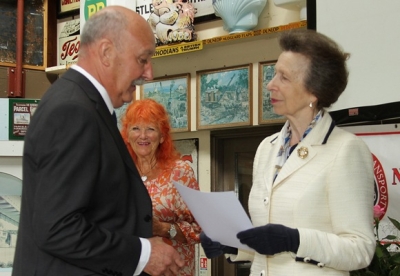
Dennis vehicles have regularly featured in awards line-ups, and this year is no exception. A remarkable company, based in Guildford, it built all types of motor vehicles but are perhaps best known for fire engines. Worthy of note is the fact that for most of the 20th century the Dennis company was Guildford's main employer. This is the only surviving Dennis 30cwt fire engine found thus far which carries an escape ladder - a Merryweather lightweight 50`. It also has a different chassis layout to any of the few pre 1930 survivors and it is fitted with the rarer OHV engine. 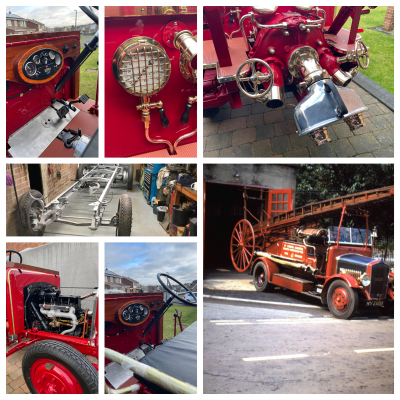
Nigel's aim throughout the work has been to undertake the complete restoration of NV 2881 to its former glory - that is to say to keep the appearance and equipment and overall integrity of the vehicle as near as possible to the day it left the factory. As can be seen, things are nearing completion, having been stripped to, then built up from, a bare metal chassis, including an engine rebuild and new clutch. The brass headlights have been restored like new. Of note, as it would have been back in the day, all paintwork has been completed by brush all with 8 or more coats of traditional coach paint. Wiring is currently being completed, and the wings which have had an initial tidying and repair with a panel beater, will be stripped and painted.
The vehicle is probably unique in its configuration and displays a type of lightweight fire engine built by the famous firm of Dennis Bros. which was supplied in small numbers to local borough brigades. It is being restored to an exceptional standard and is certainly worthy of national recognition by way of a restoration award.
Philip Jones - 1936 Bainton & Berkhampstead working class narrowboats
A Restoration Award is given to Philip Jones who is leading the restoration of Bainton & Berkhampstead, a pair of 1936 working class narrow boats. Bainton & Berkhampstead are a pair of Woolwich class large working narrow boats built by Harland & Woolf in London in 1936 for the Grand Union Canal Carrying Company, one of 24 pairs of motor and butty and the last still as a pair. They were owned by Roger White, a member of the Shrewsbury and Newport Canals Trust for many years, until health concerns forced him to consider their disposal. They were donated to the Trust on condition they are conserved as a pair.
The Trust is working hard at Wappenshall Junction, where the Newport Branch meets the Shrewsbury Canal and at Trench Arm. This is now back in water and is planned to be the future home of the boats. The transhipment shed provides year round cover for the boats. The only downside is that movement of the boats must always be by road: restoration of the canal through Newport and onto Norbury Junction is at present some way off, although the section through Norbury remains in water.
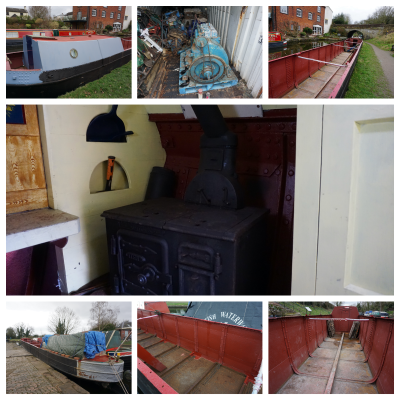
The Shrewsbury and Newport Canals Trust is the owner, and is working hard to see the boats feature as a centrepiece at its restored basin at Wappenshall. Philip Jones is the team leader working on the boats. The motor, Bainton, is at Norbury Wharf whilst butty Berkhampstead is further down the Shropshire Union having been used to carry stone for a towpath restoration project.
This is another ambitious project that is closely entwined with the project to restore the basin, where the boats will be on display for the many visitors expected, and they are thoroughly deserving of an award.
Andy Bishop - 1950 Midland Red 3352 Coach
Andy Bishop is this year recognised for his outstanding restoration if a 1950 Midland Red coach 3352.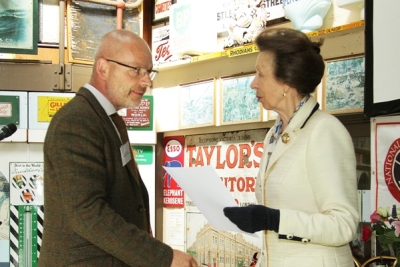
Andy, from Ashbourne in Derbyshire, has been moving heaven and earth to re-instate a particularly pretty and rather unusual coach, and he is making a terrific job of it. This coach has a chassis, engine & running gear built by Birmingham & Midland Motor Omnibus Co (BMMO) from Birmingham who ran services as the Midland Red bus company. The chassis was the same as the earlier C1 coach from 1948/49. However 3 of the 12 C2 Coaches built were re-bodied with Plaxton Embassy 1, 26 seat and 7'6" wide coach bodies for the Scottish Tours . It is the only example left of the C2/CL2 class Midland Red Coaches. It is a rare beasty, being 1 of only 6 Midland Red designed BMMO engined coaches left in preservation (2-C1, 2-C5 , 1-CM6) .
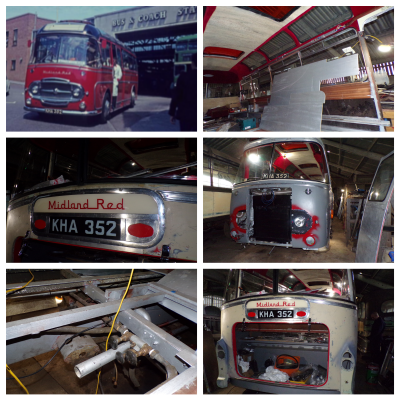 This particular example was partially converted in early 1980s to a tour bus for a jazz band; amongst other things the seats & luggage racks were removed. It was finally bought for restoration in 1990s. Time had taken its toll - both steel & wood has suffered extensive rot. The engine and ancillaries all required refurbishment due to standing for 30 years. The perspex front dome, skylights & rear windows needed replacement which required moulds to be made. But work thus far has renewed the floor, and seats have been sourced and re-covered.
This particular example was partially converted in early 1980s to a tour bus for a jazz band; amongst other things the seats & luggage racks were removed. It was finally bought for restoration in 1990s. Time had taken its toll - both steel & wood has suffered extensive rot. The engine and ancillaries all required refurbishment due to standing for 30 years. The perspex front dome, skylights & rear windows needed replacement which required moulds to be made. But work thus far has renewed the floor, and seats have been sourced and re-covered.
Most would have concluded 2 years ago that restoration would be impossible, let alone a restoration undertaken in a pokey leaky little space with a single 3 pin plug, hemmed in between 2 other wrecks. Andy has done the impossible though, and saved a stunning vintage vehicle. He should be very proud, and the trust is very proud to recognise his efforts with a restoration award.
The Thames Sailing Barge Trust - 1922 Sailing Barge Pudge
The Natiuonal Transport Trust has made awards to Thames Barges previously, and is delighted to see yet another being restored and preserved for future generations and we are grateful to Steve DeLaSalle from Danbury in Essex for bringing Rochester-built barge Pudge to our attention.
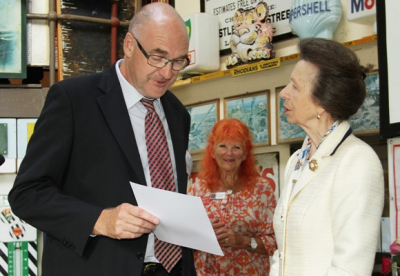
The Thames Sailing Barge was the main form of bulk cargo transport on the East Coast for over two hundred years. S.B.Pudge is a Thames spritsail barge, built in wood in 1922 in Rochester, Kent and was one of the last wooden barges built. Pudge is listed on the Historic Ship Register and is also a Dunkirk Little Ship, being involved with the evacuation of troops in 1940. The Thames Sailing Barge Trust, (TSBT), which is a 100% volunteer charity, acquired Pudge in 1968. It has taken care of her ever since, enabling her to continue sailing on her local waters. In 2019 the TSBT began a major restoration project to replace Pudge's rotten decks and rebuild the entire accommodation area below. The project to date has been part funded by the Lottery Heritage Fund, and other charitable trusts and funds, as well as donations from TSBT members, volunteers and members of the public. The project is nearing its completion. The decks have all been replaced, and the accommodation refit is underway.
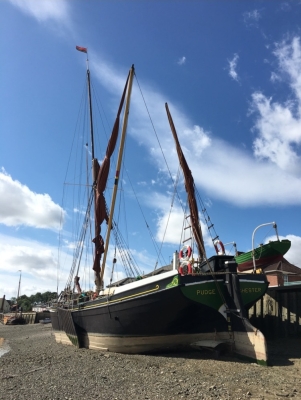 The last significant piece of work required to get Pudge back sailing again is a new pair of leeboards. The current boards are old, beyond their service life, and in need of replacement. The leeboards are a unique feature to the Thames Sailing Barge and look rather like two wings sitting either side of the vessel. As the vessel itself has quite low draft, the purpose of the leeboards is to minimise the extent to which the vessel is blown sideways across the water by the wind when she is under sail. The leeboards are 23ft long by 7ft wide and a fan shape, are built from oak and wrought iron and each weighs approximately one ton.
The last significant piece of work required to get Pudge back sailing again is a new pair of leeboards. The current boards are old, beyond their service life, and in need of replacement. The leeboards are a unique feature to the Thames Sailing Barge and look rather like two wings sitting either side of the vessel. As the vessel itself has quite low draft, the purpose of the leeboards is to minimise the extent to which the vessel is blown sideways across the water by the wind when she is under sail. The leeboards are 23ft long by 7ft wide and a fan shape, are built from oak and wrought iron and each weighs approximately one ton.
Thames barges have been a back drop of the Thames for hundreds of years, and have inspired artists, writers, and photographers, through the ages. With so much fine work done already, the Trust is keen to help where it can to see Pudge part of the vista once more, and are delighted to be able to support by way of a restoration award.
The Excelsior Trust - 1906 Yarmouth Shrimper Horace & Hannah
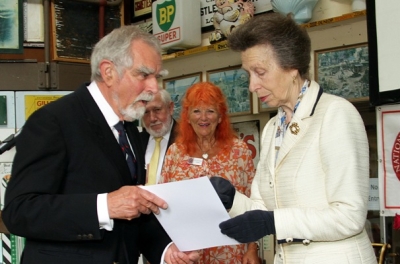
Our thanks to John Wylson of Lowestoft in Suffolk and the Excelsior Trust for alerting us to the restoration of a 1906 Yarmouth shrimper, named Horace & Hannah as a candidate for consideration. Originally constructed in 1906, by Beeching Brothers of Gt Yarmouth, Norfolk, Horace & Hannah is one of the last surviving Yarmouth Shrimpers – boats that caught shrimps for the holidaymakers of Great Yarmouth. She is in relatively good condition having been rebuilt and restored to operational use in the 1980s. Later under new ownership she fell into disrepair and finally sank at her moorings after which she was donated to the Excelsior Trust for safe keeping. This Trust restored and operates the well-known Lowestoft Sailing Trawler Excelsior LT472 as a sail training vessel. She is one of National Historic Ships' exclusive fleet of vessels of outstanding national importance, and over 33 years of constantly changing economic circumstances the Excelsior Trust has managed to maintain Excelsior in good condition, including surviving the recent pandemic. And the Excelsior Trust is spurred on by the desire to have Horace & Hannah back in use alongside Excelsior. Long-term she will act as a training vessel for the Excelsior Trust’s regular crews who will be able to run trips for the public from Lowestoft’s Historic Vessels Berth.
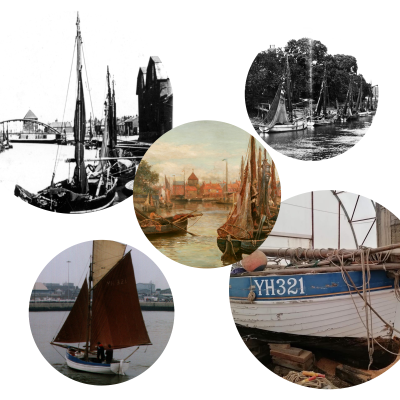
Great Yarmouth shrimpers were distinctive, small craft, developed in the first quarter of the 19th century to supply Victorian tourists with pink shrimp. It was a speciality of the town and they consumed hundreds of gallons every day of the season. From a fleet of probably two hundred there are four survivors. The best was sold to Germany a decade ago; one was recently sold for 10 pounds as a 'project', whilst the other has been on sentry duty outside the Time & Tide Museum in Great Yarmouth, which does not bode well for her future. Working beach boats on this coast had a standing and dipping lugsail, but as these shrimpers had to make their way up the Yare to various quays where the boilers were located for cooking the shrimps in time for tea, they were given a more handy gaff rig with the mast stepped in a tabernacle and an unusual gooseneck arrangement so that the mast could be lowered and raised easily to shoot the bridges to reach the higher berths. Lowestoft Shrimpers were similar but none survive.
With the hull scraped down on the outside to enable inspection of the wood, the stem iron removed for re-galvanising and many small repairs already completed to the transom, progress, undertaken by volunteers under the watchful eye of a small number of boatbuilding experts, is excellent. The progress is impressive if, at times, challenging. Nevertheless the Excelsior Trust is doing a fine job preserving a vessel with real, regional, historic importance, and for this reason is well deserving of a Restoration Award.
City of Portsmouth Perved Transport Depot (CPPTD) - 1935 Leyland TDV Double Decker Bus
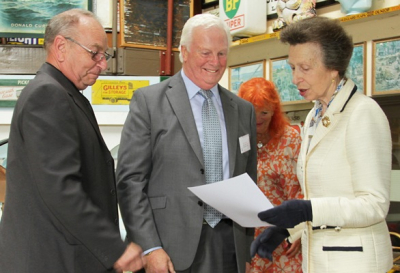
In the City of Portsmouth Preserved Transport Depot, Wicor, Portchester, Hampshire, is yet another amazing restoration project, this one being a 1935 Leyland TD4 Open Top Double Decker Bus, again being restored by a group of very dedicated, and doubtless talented, volunteers. This is one of 4 vehicles converted to open top by Portsmouth Corporation in the early 1950's and ran in service until 1971. It is pretty rare too, there are a small number of others; one vehicle is in a museum and unlikely to run again. One is with a North of England Preservation group and deteriorating. One has just been donated to CPPTD but it is fitted with a roof so that this one is likely to be the only survivor running in open top form
The restoration of this vehicle was started in Yeovil some years ago but being unable to complete it the ownership was passed to the CPPTD. The vehicle lay idle in a complete kit of parts and was used as a store. In August 2021 a group of members lead by |Bob Chalmers, of Warminster in Wiltshire, took it on as a project. And what a project! Hats off to the restorers of double deckers, not only twice the passenger carrying capacity but twice as much work when it comes to restoration. But the team have made terrific progress; the vehicle has been cleared of the stores, upper deck has been painted and new flooring laid and seat frames refitted. The vehicle is being totally rewired. The lower saloon has had a new ceiling fitted and painted along with new lighting. The side panels are being covered in new leather cloth and new flooring is being laid. The cab has been painted, driver's seat recovered steering wheel etc stove enamelled. Next steps will see finishing the fitting out the lower saloon, finishing the rewiring, getting the vehicle running and finishing the outside panelling before it can all be painted.
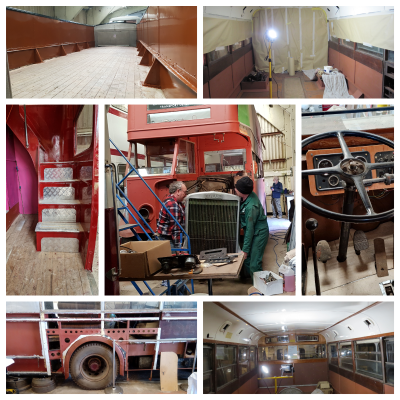
This is a rare example of a Leyland Titan TD4 with an English Electric Body which is already attracting much interest from enthusiasts. It will be a valuable addition to the Bus Preservation Movement and as a result is a worthy recipient of a Restoration Award.
Dan Brook - 1922 Marshall Convertibel Steam Engine Zulu
The second steam engine selected for an award in 2023 is also a steam roller, and it is also a Marshall. Zulu is currently in a thousand pieces being rebuilt to more or less the state in which it was first delivered to the Isle of Man Transportation Department in 1922. 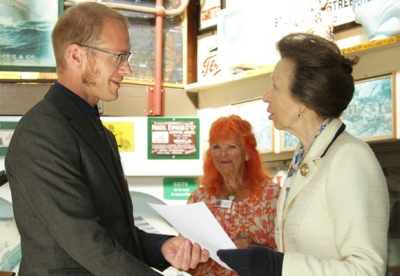
Owned by Dan Brook from Warrington in Cheshire, Zulu is a notable historic machine which is undergoing a ground up restoration to an exceptional standard. Marshall 75408 was supplied new to the Isle of Man Transport Board in 1922. Unusually the engine was designed to be used both as a steam roller and a steam tractor, and was supplied with both rolls and wheels. During its working life it spent the winter months as a tractor, hauling timber, whilst in the summer it worked on the Islands roads as a roller. Eventually it retired into preservation in the 1960s but not before it was featured on a Royal Mail postage stamp. It is fair to say that Zulu rolled the roads that countless TTs have run on. Zulu now has both a twitter and a Facebook page, a YouTube channel and is widely followed. It is also true to say that Zulu (in postage stamp form) has appeared in every copy of the magazine Old Glory since its inception. Before dismantling, a day driving Zulu was one of the trusts annual raffle prizes, and a fine day it was, although the carrot cake suffered somewhat from the spirited driving of the winners gang!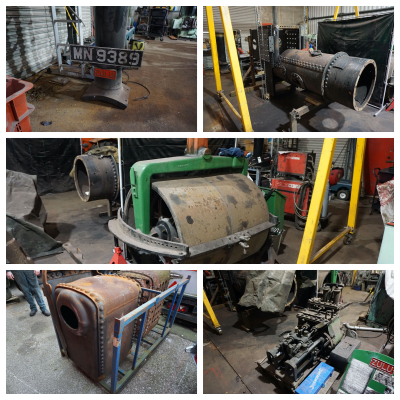 The engine has been completely dismantled and the original nearly 100 year old firebox, tubes and other damaged boiler plates removed. In order to effect repairs, Dan has decided to do as much as he can himself. This has entailed designing and constructing special riveting equipment, and he has even trained and qualified as a coded welder. Even the rivets and stays are being made by Dan in house.
The engine has been completely dismantled and the original nearly 100 year old firebox, tubes and other damaged boiler plates removed. In order to effect repairs, Dan has decided to do as much as he can himself. This has entailed designing and constructing special riveting equipment, and he has even trained and qualified as a coded welder. Even the rivets and stays are being made by Dan in house.
This project is being recognised on 3 counts. First, it is a rare and probably unique engine. Second it has a very interesting history spent on the Isle of Man. Finally the restoration is being done virtually single handed by a talented young engineer who represents the next generation.
Stephen Slater - 1958 Curry Wot Biplane Airymouse
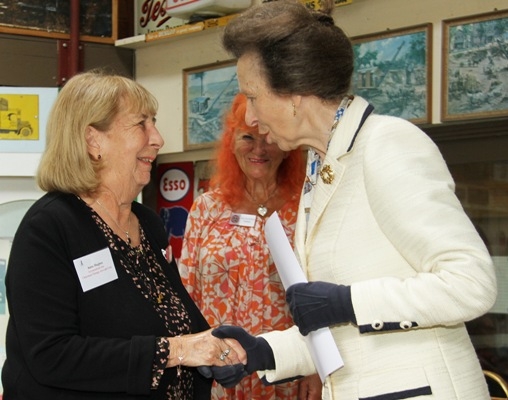
This project is progressing under the expert eye of Stephen Slater from Chesham in Buckinghamshire and sees the restoration of a 1930 Currie Wot single seat sports biplane. Pictured above is Anne Hughes receiving the Award on behlaf of Stephen Slater from The Prinxcess Royal.
Airymouse is a Currie Wot single-seat sports biplane, built to the original 1930s drawings for Hampshire Aeroplane Club by its designer Joe Currie, a former WW1 pilot and engineer. It is a classic wood and fabric design and the oldest example of the type.
Airymouse has a particular history in that in late 1950s, it was acquired by Westland’s chief test pilot Harald Penrose, whose own flying career had begun in the 1920s. He wrote a series of books, one of which Airymouse chronicled his flying the biplane over the English countryside. Even then, the aircraft was an anachronism, a 1930s aircraft with a tailskid and no brakes, and to quote its original owner, "a diminutive biplane of insignificant horsepower".
It was acquired by its current owner Steve Slater in 2016 and returned to flight after several years in storage. In early 2022, he decided deeper restoration was required, so the fabric was stripped from the airframe, woodwork repaired and the aircraft re-fabriced and repainted by Steve and friends. Final re-assembly is currently underway and the wings have been refitted.
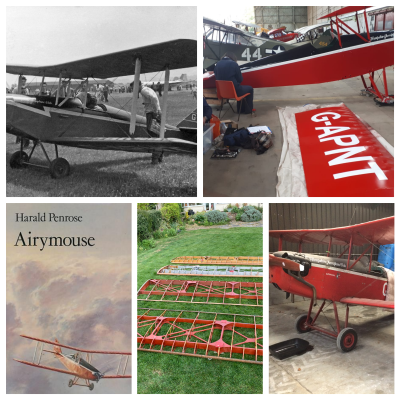 Airymouse is one of the oldest non-factory built aircraft flying in the UK. The restoration has been carried out to preserve its originality, history and using traditional techniques. It is a rare example of a low-cost, aircraft which pioneered the early post-war sport flying movement which continues today.
Airymouse is one of the oldest non-factory built aircraft flying in the UK. The restoration has been carried out to preserve its originality, history and using traditional techniques. It is a rare example of a low-cost, aircraft which pioneered the early post-war sport flying movement which continues today.
Unfortunately Steve is currently convalescing from serious illness, and cannot be here today. Nonetheless the Trust was keen that his excellent project should be recognised this year with a restoration award.
Lincolnshire Vintage Vehicle Museum - 1935 Midland Red SOS DON Bus
We are grateful to Lee Floyd for bringing to our attention the sterling efforts of a group of dedicated volunteers from Lincolnshire Vintage Vehicle Museum, Lincoln, who are undertaking an ambitious restoration of the 1935 Midland Red (Birmingham & Midland Motor Omnibus Company) SOS DON bus originally operated by Trent Motor Traction Company.
This bus marks the start of what we now call the “leisure industry†which coincided with paid annual leave. By 1936 this was carrying passengers from the East Midlands to Skegness, the nearest seaside tourist destination. Shortly after, in the summer of 1938, thousands of working-class Britons got their very first tastes of sun, sea and sand, thanks to a new law that meant that for the first time ever, they could take a paid annual holiday. In the early part of the twentieth century, bus and coach transport became the means whereby these working class men and women could travel cheaply further and faster. In 1936 in Skegness, the very first UK Holiday Camp was founded by Billy Butlin. As part of the Trent Motor Traction Company fleet plying their way from Derbyshire, through the pit villages and industrial heartlands of the East Midlands, for over 20 years this bus helped carry the earliest generation of British holidaymakers into the modern world.
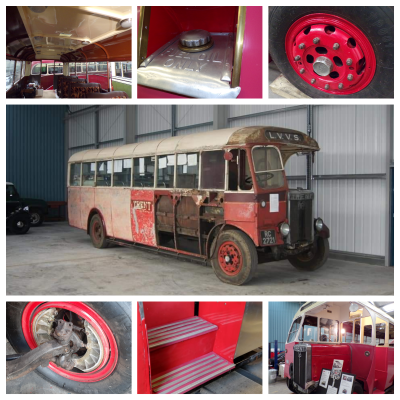
When complete, this bus will be a running, fully operational exhibit, in period-accurate livery and available to travel the actual routes and destinations served nearly a century ago. Most of the restoration work has been completed to a high standard by ex- engineers and operational volunteers at the museum workshops and is the successful culmination of many years work. For this reason the Trust is delighted to recognise the work with a Restoration award.
The National Transport Trust makes loans to groups, associations and individuals at advantageous rates for the restoration of artefacts - whether mobile or part of the infrastructure. Applications must be supported by a simple business plan which demonstrates the financial viability of the project. A sample business plan is available on request from the Treasurer.
The Trust does occasionaly make Awards for schemes which further the preservation movement. Again if you wish further information please contact the Treasurer.